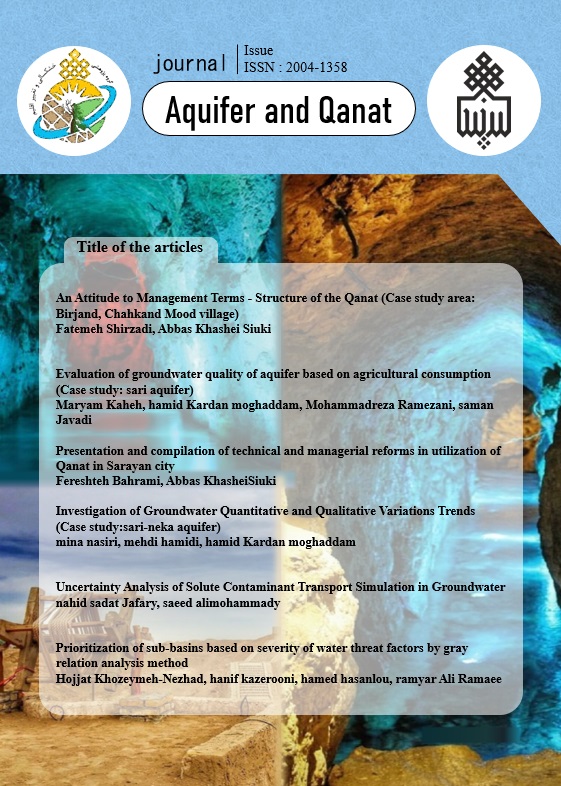Document Type : Original Article
Authors
1 Water Science and Engineering, Birjand University, Birjand, Iran
2 Department of Sciences and Water Engineering, Faculty of Agriculture, University of Birjand،Iran
Abstract
Qanat, one of the most important Iranian innovations, is a perfect example of human adaptation to its surroundings and a sign of the sustainability of Iranian desert cities. Qanat is a sign of Iranian genius and invention; an invention that has led to the descent of human life and civilization. These sustainable and environmentally sustainable systems are now considered by the world's advanced countries, and are attractive scientific and educational issues in universities and research centers. According to the documentation of the traditional method of digging the qanats by magnets, the best and cleanest way is to get water from the ground to the surface and be available continuously. Behind each word, the local vocabulary is a world of information, beliefs, traditions, knowledge, cultures and myths, and the history of a nation or nation, and by the death of this term, a huge amount of the lasting and valuable inheritance of culture and indigenous knowledge of Goes away The most important goal of this research is to collect the technical-management terms of the Qanats in the Sarayan area, with a focus on indigenous knowledge and local dialects. These terms are collected separately in technical and managerial departments by interviewing experts in Qanat, From the vocabulary with the local dialect of the city of Sarayan you can refer to the Kalak, Halghofnah, Chah khoie, Dashi, Sangagi, Kenek, Kalak and Kalokh eshkah.
Keywords

